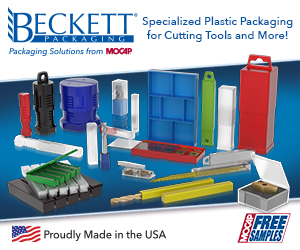This month’s column is for business owners who have ever struggled to make a decision regarding a significant capital expense. Such decisions are rightfully daunting, even with the best of economic conditions and the confidence that the financial outlay would be a solid investment in the future of the business. For moments like this, the best financial advice I can offer has more to do with a person’s business mindset than with any specific lending instrument or strategy. Specifically, work on developing a mindset that prepares you for the big decisions when they come along.
So, how do you go about attaining such a mindset? To help answer that question, I obtained permission to share a lengthy excerpt from an interesting article, “The Key To Achieving A Future-Ready Mindstate,” written by Mark Holmes, a friend and accomplished financial consultant.
"It’s not uncommon for leaders to feel as though the ground beneath their feet is constantly shifting, and there is little they can do about it. Think about the massive disruptions we’re witnessing as we speak about technology, politics, the economy and other conditions that offer little clarity on the future.
"So how on Earth can we possibly have a future-ready mindstate?"
Holmes next mentioned a resource he enjoys turning to for answers, a book titled “What’s Next Is Now: How To Live Future Ready” by Frederik G. Pferdt, Google’s first Chief Innovation Evangelist. In the process of reading the book, Holmes said he began thinking about how the directives in the book title could “apply to leaders in a practical way that empowers them to move forward into the future with confidence rather than employ a ‘wait and see’ approach that rarely benefits.”
 We tend to think of innovation as being a grand, sweeping gesture and that we charge into the future sprinting. Reality can be and probably should be something much different.
We tend to think of innovation as being a grand, sweeping gesture and that we charge into the future sprinting. Reality can be and probably should be something much different.
In Pferdt’s view, the future is a place you personally envision based on the opportunities you discover.
"Speaking of the present, that’s precisely where the book begins and focuses on: a future-ready mindstate. The great irony of being future-ready is this: Pferdt sees the key to being fully ready and prepared for anything that happens next as getting your head aligned to fully experience the present."
A future-ready mindstate, according to Pferdt, has the following elements:
- Radical optimism
- Unreserved openness
- Compulsive curiosity
- Perpetual experimentation
- Expansive empathy
"Even without me giving you the full description of these five qualities, you likely have a good sense of whether you have each. What it really comes down to is this – an eagerness and confidence to move forward based upon the perspective of seeing a world of abundant opportunities and choices.
"Generally speaking, we’re not built for change as much as by change. We tend to think of innovation as being a grand, sweeping gesture and that we charge into the future sprinting. Reality can be and probably should be something much different. Innovation is a series of iterations and experiments.
"The point is to focus on the process rather than the end product. If you follow your process, you’re moving toward making your mindstate and, in turn, your company more future-ready."
From my perspective, cultivating the five elements of a future-ready mindstate shouldn’t be too terribly difficult for business leaders when you consider that they likely relied on those same qualities to reach their current position. In essence, leaders who pay close attention to their company’s place within an ever-changing market are able to make informed decisions when opportunities come along.
When opportunities arise and I get a call, much of my work with clients involves collaborative dialogue to accomplish their goals. My part in this process inevitably involves assessing what type and level of business financing, current and future, will be required to support the needed initiatives and proactively putting the infrastructure in place to facilitate them.
When it comes to obtaining the right type of leverage or financing, there are a myriad of factors that play into choosing the best solution. That’s my job. Your job is to keep your business well-positioned and ready to go when you recognize a good opportunity.
Related Glossary Terms
- turning
turning
Workpiece is held in a chuck, mounted on a face plate or secured between centers and rotated while a cutting tool, normally a single-point tool, is fed into it along its periphery or across its end or face. Takes the form of straight turning (cutting along the periphery of the workpiece); taper turning (creating a taper); step turning (turning different-size diameters on the same work); chamfering (beveling an edge or shoulder); facing (cutting on an end); turning threads (usually external but can be internal); roughing (high-volume metal removal); and finishing (final light cuts). Performed on lathes, turning centers, chucking machines, automatic screw machines and similar machines.






